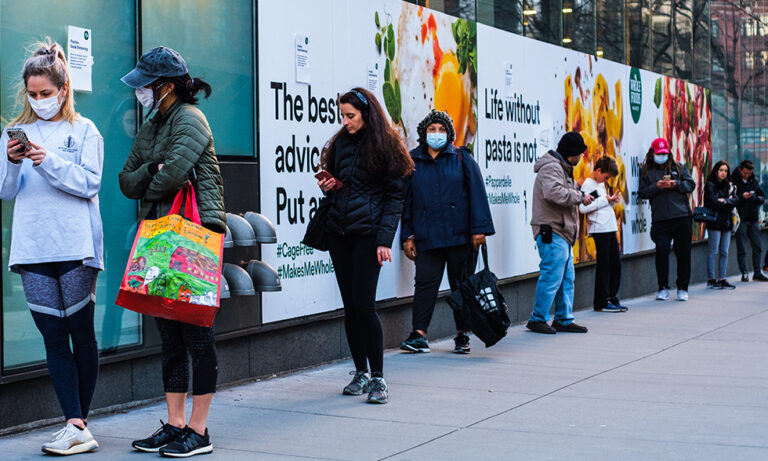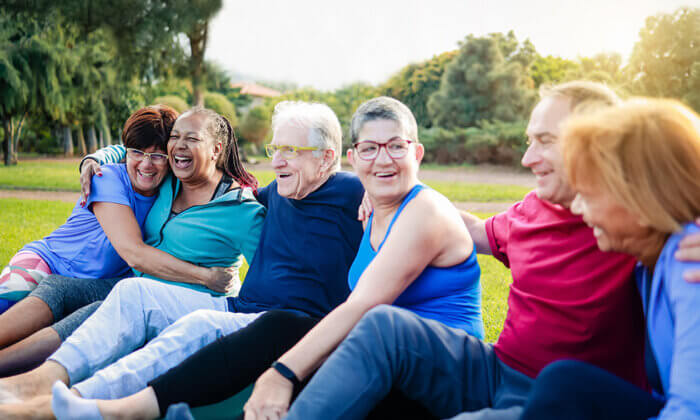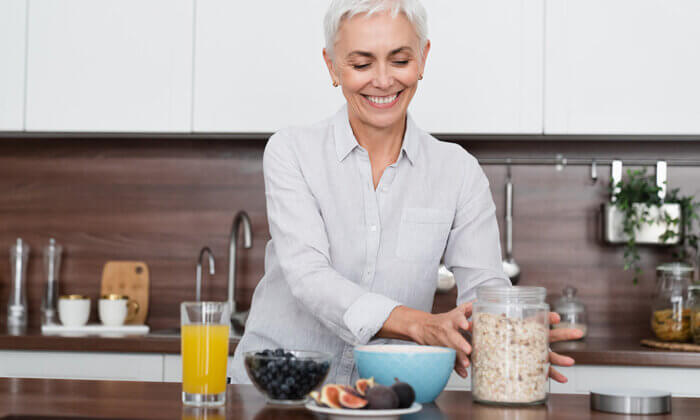12 Lessons to Learn for the Next Pandemic Stage
| | Reading Time: 9 minutes

Why aren’t we any wiser about COVID prevention than we were in early 2020? One reason is that SARS-CoV-2 variants evolve fast. As pandemic conditions shift with vaccination and antivirals, the virus finds new ways to infect. Another is that bureaucratic incompetence got in the way. The government and healthcare bungled the early response and couldn’t catch up. To be fair, other countries, including China, failed too. Our advantage now is we can learn from the mistakes of the last two and a half years and apply better models to create realistic but flexible practices that work. Here are twelve do-it-yourself lessons I distilled from following the pandemic since late 2019 and from my experience treating patients with COVID-19, PASC, and Long COVID.
1. Base your choices on facts for the next pandemic
I realize that science is not infallible and often wrong. But scientists have guidelines and are held accountable for errors, whether by mistake or on purpose. Here are a few examples.
- Fact: Wearing face masks, particularly the N95, reduces the chance of viral infection or an infected person spreading it to others.
- Fact: According to a Cochrane Review, the gold standard of medical review papers, in an analysis of 14 studies, hydroxychloroquine didn’t prevent infection nor reduce deaths.
- Fact: Anti-SARS-CoV-2 monoclonal antibody therapies (mAbs), once the gold standard of COVID-19 treatment, was highly effective at reducing disease severity. Some of my patients who had intravenous mAb experienced complete cure quickly. Five mAb products have emergency use authorization from the FDA. But due to declining efficacy, the FDA changed course in January 2022, saying mAb therapy was unlikely to help against Omicron variants. A New England Journal of Medicine article in April 2022 found they worked well against ancestral strains and Omicron BA.1 variant, but less so with BA.2 variants. The new wave, driven by BA.4/5 variants, shows less benefit. However, the supply is limited even if mAbs were to work against BA.5. The current recommendation is to try Paxlovid first.
2. Paxlovid-rebound is concerning.
Paxlovid, the oral antiviral drug developed by Pfizer to treat COVID-19, is not new. It’s a combination of two generic antivirals, nirmatrelvir (used to treat coronavirus disease in cats) and ritonavir (developed to treat HIV). It’s not specific to SARS-CoV-2. In the short term, it’s about 90% effective in lowering the chance of severe disease in high-risk cases by inhibiting viral replication. But there’s a concern for rebound infection. “Paxlovid rebound” is found in patients whose viral load bounces back and symptoms return when they stop taking the drug after the prescribed 5-day course. If a patient has rebound symptoms, they can get more Paxlovid for another three days. But why not give an 8-day course to begin? For one, Paxlovid is expensive. Without health insurance to cover the bill, it’s $530 per course of five days.
There are also plenty of side effects and potentially severe interactions with other drugs. The elderly and those with preexisting health conditions are the most vulnerable to severe COVID-19, a group that already takes multiple prescriptions. I understand the caution. But this dual-drug approach is not near good enough. It’s a stop-gap measure, and overuse could drive antiviral drug resistance.
3. Don’t be surprised that the pandemic hasn’t ended.
This coronavirus has plenty of opportunities to keep evolving. For one, its genome is very long, providing endless possibilities for new mutations. For another, SARS-CoV-2 is in every country. Some, like South Africa, are perfect breeding grounds for new strains like the Omicron variants. Over time, those new mutations get better at infecting humans. And they’re mutating so fast that antiviral drugs and mAbs are less and less effective.
Scientists are guessing through this and admit they don’t know what’s next pandemic stage. I don’t either. But it doesn’t look like we’re going to get herd immunity any time soon, if ever. Endemic delusion relies on wishful thinking and epidemiology that doesn’t apply to this virus. For the most part, we’re passed the socially critical disease state of 2020. What are we willing to tolerate? What number of COVID-19 deaths per week in the US is tolerable? Is it less than 1,000? Less than 3,000?
“Endemic delusion relies on wishful thinking and epidemiology that doesn’t apply to this virus.”
4. Continue the basic hygienic rules to limit your chance of infection and reduce its spread.
Until we know more and have more effective treatments, continue to follow the basic infection prevention rules. Avoid crowds, practice social distancing, wear a mask, and wash your hands. Stay home if you develop symptoms and test positive until you get better. These are timeless rules for all respiratory human-to-human infections, not just COVID-19. They work.
5. Self-quarantine reduces spread.
If you have symptoms (fatigue, loss of smell, cough, sore throat, and fever or chills), get tested and stay home until the results are ready. Take a rapid antigen test at home if you have test kits. Remember it takes at least 2-3 days after exposure before you feel ill. If you test positive, inform your contacts and colleagues that you have COVID-19 so they can get tested. After your symptoms are gone, and you retest negative, you can leave quarantine in 5 days if you’re young and healthy. But, if you’re older and still feel tired, even if you don’t have a fever, stay home for another five days and retest on your tenth day. To be realistic, plan on 10-14 days at home from the day you had symptoms.
And if you think you have the flu and not COVID-19, get a combination test from a reference laboratory, like Quest Diagnostics, that can check for Influenza A and B, as well as SARS-CoV-2. Self-quarantine has other benefits. It gives you time away from work, school, or the hospital for yourself. Rest more and drink plenty of water. Remember, we’re all in this together.
6. Vaccines help but are not perfect.
The Moderna and Pfizer mRNA vaccines help reduce your chance of infection if exposed. But they’re not perfect. SARS-CoV-2 is an RNA virus compared to DNA viruses like Hepatitis B and Epstein-Barr. RNA viruses, like coronavirus SARS-CoV-2, evolve fast. Besides the Moderna and Pfizer shots, over twenty-three COVID-19 vaccines are used worldwide. Moderna claims its vaccine holds up with 93% effectiveness six months after the second dose. That’s optimistic.
Other research indicates that immunity fades around four months after the first booster. Though booster shots, a reduced dose of the same vaccine, help the longevity of immune protection, we don’t know the long-term effects of multiple vaccinations. Eventually, protection wanes. Will we need endless boosters? We can’t boost our way out of this pandemic, or the next pandemic.
A universal coronavirus annual vaccine is under consideration, but Omicron has taught us that it’s capable of endless variations. Will we need annual shots like for the flu, adapted each year to a new variant? These viral puzzles are not easy to solve. But I’d like to see public health come before profit.
“We can’t boost our way out of this pandemic”
7. Improved viral immunity reduces severity and speeds recovery.
Enhanced viral immunity starts with getting enough rest and restorative sleep. Exercise daily at home or outdoors. Drink enough water. Eat regular meals of healthy food, especially organic vegetables.
According to a British Medical Journal study in 2021, plant-based diets reduce the severity of COVID-19 symptoms. And a 2022 review in the European Journal of Clinical Nutrition affirmed that a plant-based diet and healthy lifestyle choices improve your chance of beating COVID-19.
Nutritional supplements offer immune-supportive benefits, including zinc and selenium, vitamin C, and vitamin D3. Don’t guess, test. For example, I consider an optimal vitamin D, 25(OH)D is between 70-90 ng/mL. And many natural compounds like medicinal mushrooms and edible yeast support viral immunity. So do polyphenol-rich foods like apples.
8. Less severe disease, like Omicron, doesn’t mean SARS-CoV-2 is evolving towards weaker and milder disease.
The original SARS was very contagious. It spread faster and was deadlier, killing 50% of those over 65 years. Though the death rate for COVID-19 for those in their 60s at about 4%, but it doesn’t mean SARS-CoV-2 is weaker. It’s a very complex disease making it challenging to understand.
As the virus evolves, it continues its original character of being easy to spread. Omicron spread faster than Delta. The BA.4/5 Omicron variants are more infectious than BA.2, can evade prior immunity, and are less susceptible to vaccines and mAbs. Though they cause less severe illness, that doesn’t mean you should be lax about prevention. Viral wisdom means the more people infected, the greater the pool of genetic evolution for the virus. Don’t assume that it will weaken over time, eventually becoming like seasonal colds, an illness also caused by coronaviruses.
9. SARS-CoV-2 is primarily a vascular pathogen.
COVID-19 is a severe inflammatory illness that can trigger stiffness of the vascular system and disrupt the heart’s autonomic function. My clinical experience confirms that getting COVID-19 increases the risk for cardiovascular disease. But symptoms may not develop until four months or longer after infection. A very high C-reactive protein (CRP) level during the initial infection and a positive D-dimer test is associated with vascular dysfunction.
SARS-CoV-2 may also have toxic effects on the central nervous system. Even mild COVID-19 can cause an inflammatory response to damage nerve cells and cause vascular dysfunction. Symptoms involving the nervous system include brain fog, fatigue, sleep disruption, anxiety, and depression.
10. Severe COVID-19 symptoms can involve more than 1300 variants.
If you have COVID-19, thousands of viral genes contribute to your symptoms. You may have mild symptoms or none if you end up with one mix of many genes. But another mixture may cause severe illness. SARS-CoV-2 has one of the largest RNA genomes and bewilders scientists. It evades immune responses, mutates fast and in multiple ways, spawns new variants, and evolves viral fitness fast making it hard to eradicate. Rather than one disease, it’s a spectrum of diseases and biological events.
11. Treat Post-COVID symptoms and prevent Long COVID.
Even if you don’t become a Long COVID patient with ongoing illness, you can have lingering symptoms. Silent hypoxia is common in post-COVID patients and is one cause of brain fog and debilitating fatigue. Check your SpO2 with an oximeter every day. Aim for 95% or better. A healthy oxygen level is between 96% and 99%. An ideal reading is 98-99%. COVID-19 patients tend to have lower than normal readings. Below 94% is debilitating. Call your doctor if your SpO2 reading is less than 92%.
“Even if you don’t become a Long COVID patient with ongoing illness, you can have lingering symptoms.”
12. Be resilient.
If the facts change or if beliefs prove wrong, don’t despair. Adapt. If one treatment doesn’t work, consider another. Don’t just depend on pharmaceuticals. Nutritional supplements help. Several studies show getting enough vitamin D3 reduces COVID-19 severity. But don’t guess. Get tested for Vitamin D, 25-hydroxy. NAC (N-acetylcysteine) is another supplement studied for supporting cellular immunity required to fight off viral infection, including treating severe COVID-19.
The study results are mixed, however. Some point to NAC’s value in modifying COVID-19 progression; others found no significant difference in disease severity. In my clinical opinion, NAC has antioxidant protection in the lungs and is helpful for all respiratory illnesses, including COPD, lung cancer, and viral infections. It also thins mucus making it easier to breathe. An effective dosage of oral NAC is 600 mg to 1,800 mg daily. You can also inhale NAC in a nebulizer. Vitamin C (ascorbic acid) lowers inflammation and reduces vascular injury in COVID-19 patients.
Vitamin C is an effective antioxidant and, in high doses, may have positive effects on modulating immune function. Studies found that critically ill COVID-19 patients had low vitamin C levels. Laboratory references values for a vitamin C blood test are 0.3-2.7 mg/dL for women and 0.2-2.1 mg/dL for men. I want my patients to be slightly over or at the upper end of the range. An oral dose of 5,000 to 10,000 mg of buffered vitamin C daily is needed to achieve that range, but too much vitamin C causes diarrhea. Intravenous vitamin C is better for high dose therapy. Remember, nutritional supplements are not drugs. Treat them as agents to support immune resilience.
Conclusions for the next pandemic
I know it’s dizzying to keep up. Our governments failed us in the beginning. Scientists fast-tracked vaccines, but vaccination strategy remains murky. Underestimating SARS-CoV-2 is a mistake. Getting multiple infections doesn’t make you more immune but can lead to cumulative damage. The endpoint won’t be the eradication of SARS-CoV-2.
Endemic strains may appear, but not yet. Many parts of the US remain above the epidemic threshold. You could get infected multiple times. You may experience rebound COVID. Some will develop Long COVID. Don’t despair. Stay immunologically agile. Follow simple, basic rules of infection prevention for the next pandemic stage. Be prepared to test, retest, and treat yourself and your family. Supplements help prevent and lessen the severity of illness, so don’t run out.
One thing is sure. Nothing will be the same.
To learn more about the next pandemic, see my blog: 10 Questions Everyone Wants to Know About Omicron Variant and the Pandemic’s Next Moves
Dr. Williams is a clinician who focuses on viral illnesses. He was ahead of the times when he wrote VIRAL IMMUNITY in 2002 and BEATING THE FLU, a book about pandemic influenza in 2009.
Selected Sources
Córdova-Martínez, A., Caballero-García, A., Roche, E., & Noriega, D. C. (2021). β-Glucans Could Be Adjuvants for SARS-CoV-2 Virus Vaccines (COVID-19). In International Journal of Environmental Research and Public Health (Vol. 18, Issue 23). https://doi.org/10.3390/ijerph182312636
Kahleova, H., & Barnard, N. D. (2022). Can a plant-based diet help mitigate Covid-19? In European Journal of Clinical Nutrition. https://doi.org/10.1038/s41430-022-01082-w
Kim, H., Rebholz, C. M., Hegde, S., Lafiura, C., Raghavan, M., Lloyd, J. F., Cheng, S., & Seidelmann, S. B. (2021). Plant-based diets, pescatarian diets and COVID-19 severity: A population-based case-control study in six countries. In BMJ Nutrition, Prevention and Health (Vol. 4, Issue 1, pp. 257–266). https://doi.org/10.1136/bmjnph-2021-000272
Singh, B., & Sciences, E. (2021). Is chloroquine or hydroxychloroquine useful in treating people with COVID-19, or in preventing infection in people who have been exposed to the virus? Neurosciences (Riyadh, Saudi Arabia), 26(2), 220. https://doi.org/10.1002/14651858.ED000151/full
Singh, B., Ryan, H., Kredo, T., Chaplin, M., & Fletcher, T. (2021). Chloroquine or hydroxychloroquine for prevention and treatment of COVID-19. Cochrane Database of Systematic Reviews, 2021(2). https://doi.org/10.1002/14651858.CD013587.pub2
Suryawanshi, R. K., Chen, I. P., Ma, T., Syed, A. M., Brazer, N., Saldhi, P., Simoneau, C. R., Ciling, A., Khalid, M. M., Sreekumar, B., Chen, P.-Y., Kumar, G. R., Montano, M., Gascon, R., Tsou, C.-L., Garcia-Knight, M. A., Sotomayor-Gonzalez, A., Servellita, V., Gliwa, A., … Ott, M. (2022). Limited cross-variant immunity from SARS-CoV-2 Omicron without vaccination. Nature, January. https://doi.org/10.1038/s41586-022-04865-0
Uraki, R., Kiso, M., Imai, M., Yamayoshi, S., Ito, M., Fujisaki, S., Takashita, E., Ujie, M., Furusawa, Y., Yasuhara, A., Iwatsuki-Horimoto, K., Sakai-Tagawa, Y., Watanabe, S., Hasegawa, H., & Kawaoka, Y. (2022). Therapeutic efficacy of monoclonal antibodies and antivirals against SARS-CoV-2 Omicron BA.1 in Syrian hamsters. Nature Microbiology. https://doi.org/10.1038/s41564-022-01170-4
Zanoli, L., Gaudio, A., Mikhailidis, D. P., Katsiki, N., Castellino, N., Lo Cicero, L., Geraci, G., Sessa, C., Fiorito, L., Marino, F., Antonietta Di Rosolini, M., Colaci, M., Longo, A., Montineri, A., Malatino, L., & Castellino, P. (2022). Vascular Dysfunction of COVID-19 Is Partially Reverted in the Long-Term. Circulation Research, 130(9), 1276–1285. https://doi.org/10.1161/CIRCRESAHA.121.320460


